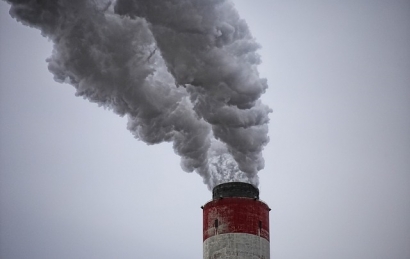
In the United States, the federal regulation for minimizing air pollution1 is the Environmental Protection Agency's (EPA) Clean Air Act. It regulates emissions from stationary and mobile sources. States have a role to play in enforcing the Clean Air Act, too, because they issue air quality permits for various business activities.
For example, in the state of Washington, companies issued with air quality permits have to send in emissions data2 that gets added to a state-level reporting system.
Even when companies do not have state-issued permits from Washington, they still have to register with the environmental authority. Once registered, the largest contributors to air pollution report their emissions and pay fees based on the output. However, a smaller company may only need to do the former.
Plus, inspections take place at some registered companies, allowing authorities to verify that those entities are complying as expected. Although these examples relate to Washington, other specifics are similarly mandated in other U.S. states as required by the Clean Air Act.
Making businesses submit emissions reports and only engage in the practices allowed by their respective air quality permits forces those entities to remain responsible for their actions or anticipate penalties.
Plus, when citizens take the initiative to access such information stored in public databases, they can decide to do things like cease supporting the businesses that are the most substantial air pollution offenders or even choose not to move to a place that has below-average air quality. The EPA offers statistics and trends for counties and cities that anyone can see.
Having that information out in the open means that businesses cannot assume that operating recklessly will go unnoticed, especially in this age of social media where good and bad news spreads so rapidly, and concerned citizens can warn each other about matters in seconds.
Businesses commonly use air quality dispersion modeling to determine how atmospheric processes affect how a pollutant disperses once it leaves the source. Then, it's possible to figure out the estimated concentration at particular downwind receptor locations. The EPA updated its guidelines3 for O3 precursors and volatile organic compounds (VOCs).
The updates mean that businesses need to find more streamlined air quality dispersion models than the ones used before the EPA made this decision. There was a one-year grace period following the news from the EPA, but it's over for all industries except for transportation. In that sector, companies have until May 22, 2020, to comply.
It's also important to realize that some air quality reporting requirements compel businesses to update their equipment in ways they might have avoided if the legislation didn't have stipulations for avoiding excessive air pollution. As a start, power plants had to update their smokestacks and install filters on them.
The EPA sets limits on six outdoor pollutants4 but organizations such as the American Lung Association advocate to ensure that the organization bases those restrictions on up-to-date information. When the EPA issues new limitations, companies may conclude that they have to either update their equipment or cease doing business.
The Occupational Safety and Health Administration (OSHA) does not have minimum standards5 for indoor air quality; it does have rules for related aspects, such as adequate ventilation. Moreover, the law that created OSHA as an organization established a General Duty Clause. It states that employers must provide their workers with environments free from hazards that cause or likely cause death or serious injuries.
Plus, two states — California and New Jersey — have regulations for indoor air quality. The known effects of dirty indoor air range from headaches to eye, nose and throat irritations. If companies submit air quality reports that show the workplaces are excessively contaminated, the leaders of those enterprises may take action to make improvements without further prodding.
If they don't, regulatory authorities may intervene, potentially causing both short and long-term health benefits for current and future workers.
Perhaps one of the most important things about the regulations described above is that they set expectations for how companies must conduct business. Furthermore, those entities must stay abreast of new developments. President Trump has rolled back some environmental standards set by the Obama Administration, but that doesn't mean businesses should become complacent.
Failing to comply with air quality regulations and submit the necessary reports could lead to fines, plus give companies negative press coverage. Fortunately, the internet makes it simple for businesses to learn what's required, and they can hire consultants to help them decide how to tweak their practices in cost-effective ways that get results.
Sources:
Summary of the Clean Air Act. (2017, August 24). Retrieved December 31, 2018, from https://www.epa.gov/laws-regulations/summary-cleHYPERLINK "https://www.epa.gov/laws-regulations/summary-clean-air-act"an-air-act
Air quality emissions reporting. (n.d.). Retrieved December 31, 2018, from https://ecology.wa.gov/Regulations-Permits/Reporting-requirements/Air-quality emissions-reporting
Dix, D. (2018, December 10). Amendments to the Guideline on Air Quality Models, Where Are We Now and Other Recent Updates. Retrieved December 31, 2018, from https://www.all4inc.com/4-the-record-articles/amendments-to-the-guideline-on-air-quality-models-where-are-we-now-and-other-recent-updates/
The Clean Air Act and Healthy Air. (n.d.). Retrieved December 31, 2018, from https://www.lung.org/our-initiatives/healthy-air/outdoor/fighting-for-healthy-air/about-fighting-for-healthy-air/the-clean-air-act.html
Indoor Air Quality. (n.d.). Retrieved December 31, 2018, from https://www.oHYPERLINK "https://www.osha.gov/SLTC/indoorairquality/"sha.gov/SLTC/indoorairquality/
Emily grew up in a small town in Pennsylvania. She has a passion for ecology and conservation and sustainability.
In high school, she discovered her other passion: writing. After graduating with a degree in Professional Writing, the most natural step seemed to be combining the two passions in one forum. Her goal is to help people become more informed about the world and how we fit into it.
Her website is Conservation Folks

